When traveling in the backcountry water represents both a savior and a burden. We depend on water to sustain ourselves, yet at the same time it represents extra weight and volume that demands space in our packs. In many cases, simply finding a usable water source can alter and dictate the plans of a hunt. Quite simply, water or more specifically the ability to source and produce potable water is the single most important factor to consider when planning a trip into the deep backcountry or wilderness. Precious hunting time can be lost hiking up and down mountains in search of a usable water source if your planned destination does not provide this essential element.
Now this is nothing new. Humans have been exploring and drinking water in remote parts of the world for all of human history, in many cases to our peril. Waterborne illnesses and diseases are the world’s leading killer. The World Health Organization estimates more than 3.4 million people die every year due to water related deaths.
Many of you reading this will have personally experienced the wrath of Giardia or some other contaminant while on a backcountry trip. The quality of your water is at worst a life and death matter and at best essential to success and enjoyment. Although there are many options available to the backcountry enthusiast – tabs, pumps, chemical purifiers, filters and electronic devices – many of these products are less effective than we think or more complicated than we truly need.
One company and their filtration products have been at the forefront of the ongoing international aid efforts to provide drinkable water to vast tracts of the Third World. Vestergaard and their LifeStraw filtration products have been saving lives across the world for decades. Luckily for us this simple, innovative product was introduced to the retail market by two entrepreneurial BC based brothers a few years ago and has taken the water filtration market by storm. Unbelievably lightweight, and exceedingly effective the LifeStraw is a product every hunter should have in his or her pack.
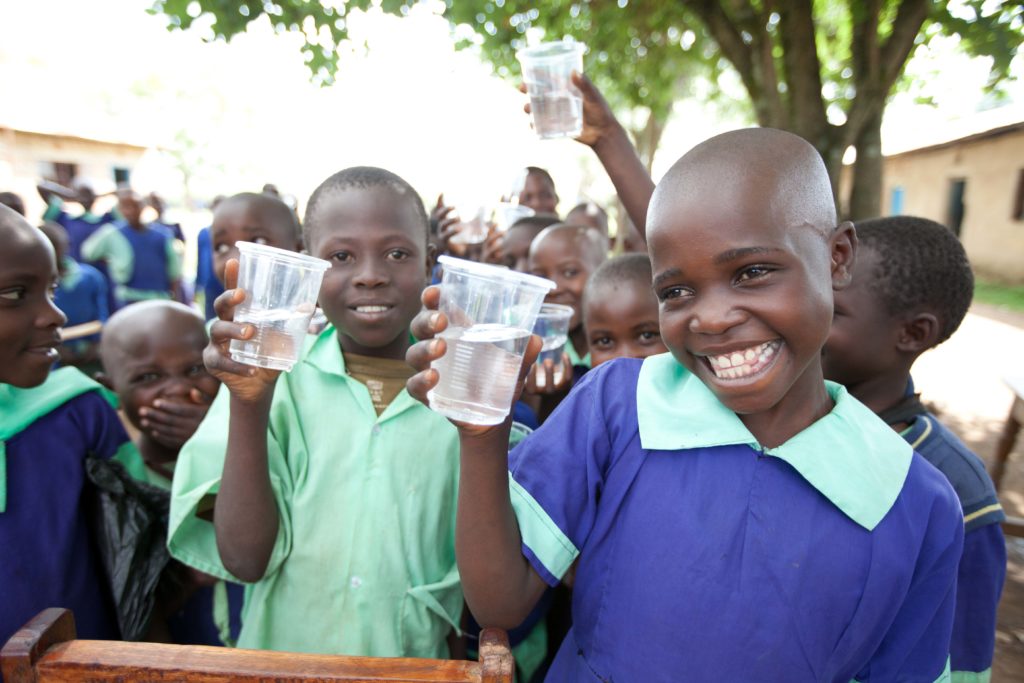
Give us an overview of the LifeStraw water filter, what is the history behind this innovative product?
Lifestraw is a personal water filter that allows you to drink straight from a stream or puddle and was initially developed for humanitarian aid efforts in Africa. The original goal was to provide a child in Africa with a portable solution for finding drinkable water for very little cost. The product is extremely simple, durable, lightweight, easy to use and highly effective. The filter literally takes virtually all bacteria out of the water and has become a favourite tool for humanitarian aid and national disasters and crises around the world. It has been distributed in the millions in Haiti, Pakistan, the Philippines and all over Africa.
When was the company originally founded?
The LifeStraw is manufactured by Vestergaard, which is a Lausanne-based public health organization that has been around since the sixties, producing things like bed nets and HIV test kits. They’re essentially a health care company and very large. They have offices all over the world and produce a wide range of products. LifeStraw is just one product in their water division that has since been brought to the retail market and made available for sale to the end consumer. That shift to the retail market is relatively new in the scope of Vestergaard’s history. Since the release of the LifeStraw they have introduced a few other products for the retail market. The LifeStraw Go and LifeStraw Mission are examples of this.

I think there is a lot of confusion in the marketplace surrounding what people need, and want and what’s actually important. To make sure we’re all on the same page, the most important thing is whatever filter you have, it has to take out bacteria and protozoa. That includes things like Cryptosporidium, E. coli, Giardia, Salmonella – common things that will cause gastrointestinal disease – the stuff that’s going to make you sick right away and result in vomiting and diarrhea. A common problem when using water sources in the backcountry of North America. Cryptosporidium is a major issue, as is Giardia, so whatever filter you buy needs to take those things out.
It also has to do it relatively quickly because you don’t want to be sitting around waiting half an hour for your water to be ready. With chemical purifiers such as the chlorine drops and aqua tabs, things like Giardia and Crypto aren’t actually killed right away. In fact, it might take at least half an hour for them to actually kill these contaminants.
Weight is also a big factor in my opinion. People who are out hunting, fishing, hiking around carrying their gear – a lot of these pump water filters on the market are quite heavy and expensive and have a lot of moving parts that can break. Nobody wants to be hauling that around – it gets to be a cumbersome and heavy piece of kit and that’s an important factor.
And of course, there’s price to consider. You don’t have to drop a hundred dollars or hundreds of dollars on a UV sterilizer or a fancy pump if you don’t want to. A lot of these options have a pretty short lifespan anyways and clog up after a very short period of time, especially with serious use. It’s a key variable to consider. Whatever you plan on purchasing, you want to know what the lifespan of the filter is.
Then durability and longevity in terms of how long it’s going to last in the field has to be taken into account. If you buy something that breaks on you when you’re depending on it, that’s a major issue. Some of the problems with the UV sterilization products are they have breakable parts and rely on batteries. Batteries can die. Batteries can be hard to find. They’re also heavy to carry around. That’s a major issue and, if you get an electrical device, those are some of the things that can go wrong.
I think the reason that LifeStraw is so popular is because it’s bomb proof. It’s nearly impossible to break it and it’s dead simple. There are no moving parts, no chemicals, no batteries, and it’s super lightweight. It only weighs a few ounces and takes up zero space – it’s nine inches long and about an inch in diameter so you can put it in your pocket. You can also clean it in the field. Its back-flushable membrane can suck water in and blow water out of it and it flushes the membrane in the process. That’s why it’s been widely adopted by the hunting and fishing crowd. They like the simplicity, durability and how inexpensive it is. One LifeStraw can filter a thousand litres!
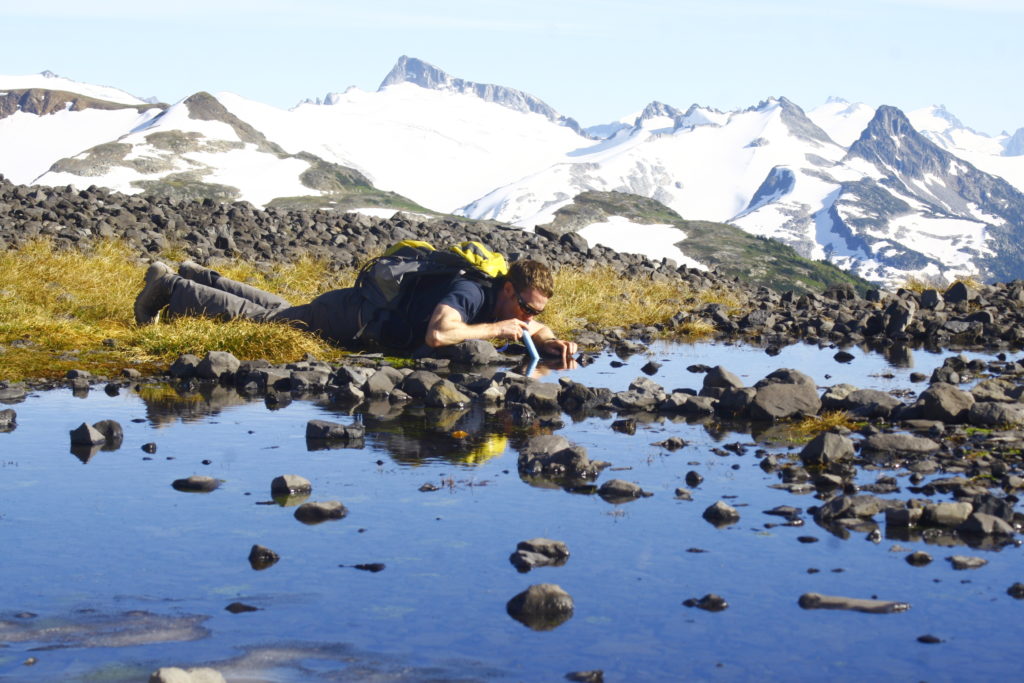
LifeStraw Mission was released this year and is exactly that – a base camp water purifier. It comes in two sizes – 5 litres and 12 litres – and allows you to just hang it from something in camp and purify a large volume of water without having to pump. It uses a finer filtration cartridge than most on the market and purifies down to .02 microns, which means the membranes that are in the purification cartridge remove everything that is .02 microns and larger. It actually takes out viruses, as well as bacteria and it will purify 18,000 litres of water. That’s a tremendous amount of water. You just hang it in camp, stick your reservoir, bottle or your bladder underneath the nozzle and it just fills them up with the purest water you can imagine.
You can literally put cow crap in the bag and it will purify the water from that. It’ll take away shit, so even if you find the most putrid, disgusting stagnant pond of water, you can fill your LifeStraw Mission up from that and the best tasting water you’ve ever had will come out of the nozzle. It’s also back flushable, so it will basically be the most reliable large volume water filtration source you have.
It was initially designed for Africa. There are over a million households using the same cartridge used in the LifeStraw Mission for their daily water needs. It’s a great option if you have a base camp and are operating or spiking out of it and you just want to have clean drinking water on hand. You don’t have to pack water in, or pump water by hand, or wait for the chemicals to react. The gravity system does all the work.
It’s an impressive system, no question. Coming back to the efficacy of the LifeStraw filter, I know in engineering circles five-nines (99.999%) of certainty is the Holy Grail. On the website I see reference to five-nines of certainty in removing viruses, six-nines in removing bacteria – it’s unbelievable what the product can do at that retail price.
It takes out everything we have to worry about in North America. It’s not going to remove chemicals and heavy metals but it does take out everything else.
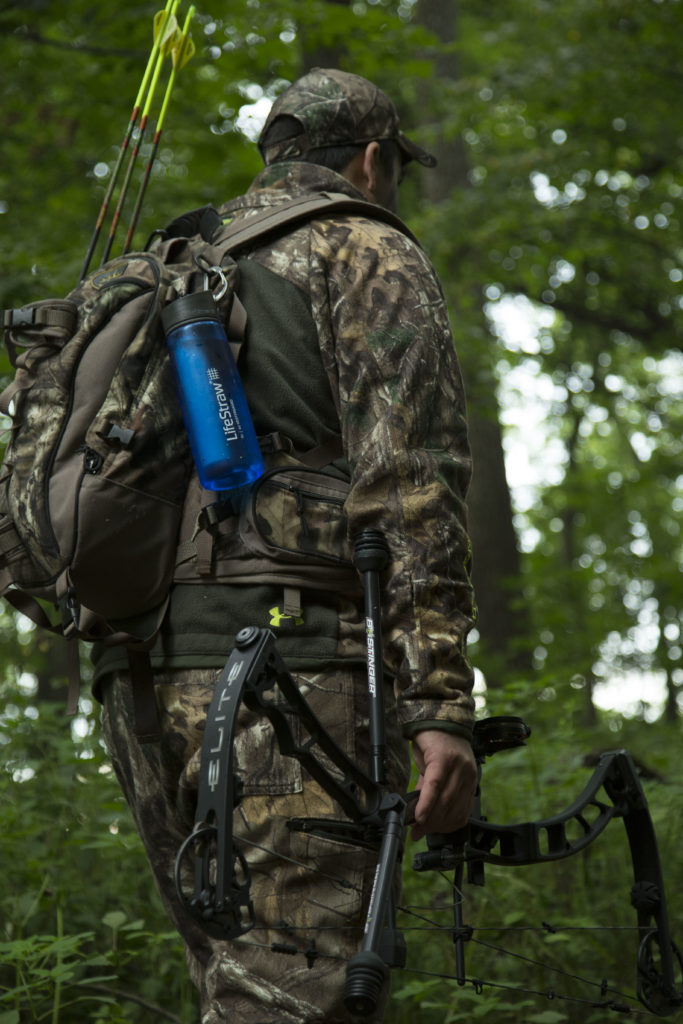
Yeah, I am. My brother and I, we run the distribution for LifeStraw in North America, as well as a number of other products. We’re always out in the field, testing the products and have been using LifeStraw while hunting for years now. I prefer not to carry a whole lot of gear or water in the mountains or other backcountry areas of BC. We obviously don’t have a shortage of water in this Province so there are a lot of streams, ponds, puddles and standing water. I’ll either drink straight from these sources with my Straw or I’ll just bring a Nalgene bottle and fill it with water and drink out of that with my Straw to keep it simple.
The LifeStraw would have to be the ultimate ultra-light portable water solution for covering ground in the back country.
Yeah. There is nothing as simple and effective on the market.
As far as user stories are concerned, do you have any say, worst case scenario or horrible water source stories from people using the LifeStraw?
There has definitely been a whole lot of crazy and disgusting water sources that people have used their LifeStraw in. If you go to YouTube, there are numerous examples of people drinking from absolutely ridiculous, disgusting water. I think the best one though, the one we’re most proud of, is Les Stroud – Survivorman. He used LifeStraw on one of his shows. He was stranded on an island somewhere in South America and there was this kind of tidal water pool that had a dead seagull floating in it and it was just the most disgusting water. It was stagnant and full of all kinds of gross stuff floating around. He said, “Water is the most important part of survival and if I drink from this water here, I’ll get sick. I just know this for a fact, it’s the most disgusting water I’ve ever seen.” Then he says, “But because I’ve got a LifeStraw, I’m going to be fine.”
And he drank it. His water throughout the show came from this pond, this puddle, using a LifeStraw and he never got sick and was totally fine. We were pretty stoked by that testimonial. We didn’t even know he was going to do it and didn’t have any play in that going on air. It was pretty cool seeing him endorse the products without us even talking to him about it.
On the personal side, I really enjoy getting up into the high alpine, whether that’s hunting, trail running, or hiking. The thing about the alpine is you get these pockets of water that are very shallow and super stagnant because they’ve been there all summer. But with the LifeStraw you can put the end in there and drink from the shallowest or smallest of puddles and be able to hydrate yourself really quickly while you’re in remote areas. It’s pretty cool seeing some of the sources you can drink from. Often sources you could never use a pump filter or other product for.
One of my favourite techniques with the LifeStraw is this: I will actually find ground that is a little bit moist and I’ll just dig down with my boot and let the water pool up in the ground, so it creates a puddle. I’ll let it settle a little bit and then you can just drink straight from that or scoop that water up in your bottle and drink from your bottle with a LifeStraw. You can basically find water anywhere (in wet climates) and filter it.
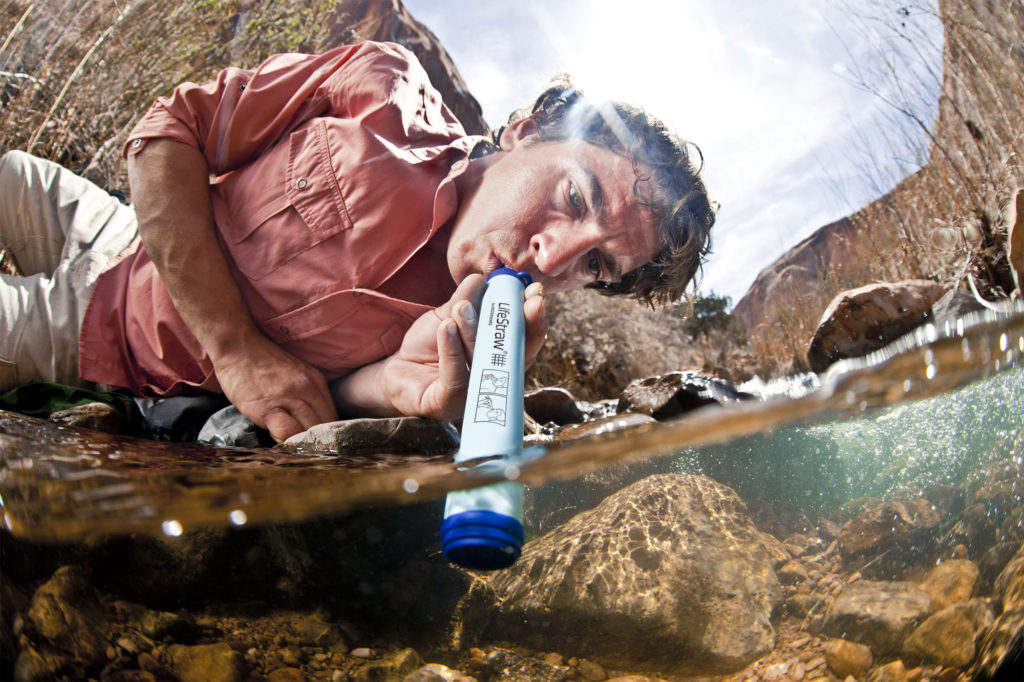
Most of these hunts are a year in the planning, so you can’t afford to lose a few days because you’ve got diarrhea issues, especially considering the cost of a LifeStraw.
Yeah, for $20 you get over a thousand litres of clean water. It’s a no brainer. I always bring one with me even if I don’t think I’m going to use it. It weighs nothing and it’s peace of mind if you get into a situation. I always have a few in the back of my truck because you never know. You might break down in the middle of nowhere and need to get some water – well, problem solved!
How did you and your brother get involved with LifeStraw and the distribution business?
We were following LifeStraw’s public health and humanitarian aid successes for years and decided to reach out to the company. We convinced them to let us try bringing it to North America as a product available for the retail market. As an end-consumer you couldn’t buy it prior to us bringing it here. After a lot of work, we managed to get the right retail partnerships established here in North America and slowly grew the brand presence in Canada and the US. We eventually secured the rights to distribute the products and managed to get it into some larger chains. Over the last two years, we’ve really grown and the visibility of the product line and the distribution channels are now well established. It’s now available in virtually every single sports and outdoor store out there. Whether we’re talking REI, MEC, BassPro, Cabela’s or Wholesale Sports – everybody carries it. Everybody loves it. It’s a really popular product and in only three years it’s become the most popular water filter on the market. It’s surpassed the pumps and UV options by a long shot. It’s been a really fast and accelerated growth period. It’s been a ton of work for us but it’s really starting to pay-off.

It’s definitely been an exponential growth curve and it’s exciting because when we launched LifeStraw in North America, we put in place a ‘buy one give one’ model with the products. Whenever a LifeStraw sold in North America, we’d provide a year of clean water to a child in Africa. No matter where you buy it, a child in Africa is going to get a year of clean water from your LifeStraw purchase.
Because of our growth and the success of the product, we’ve been able to impact a tremendous number of people in Kenya, especially. Last year, we were over in Western Kenya and installing water purifiers in rural primary schools. We installed over 1,500 purifiers providing safe drinking water to 157,000 kids for over a decade and that was all financed by a year of LifeStraw sales.
This year we’re going back at the end of October and will be impacting over 500,000 kids by providing them with safe drinking water. That’s all directly from consumer sales in North America.
Wow!
No other water filter on the market does this. No one else has a ‘buy one give one’ model, so it’s been pretty awesome seeing the impact we can have in a different part of the world.
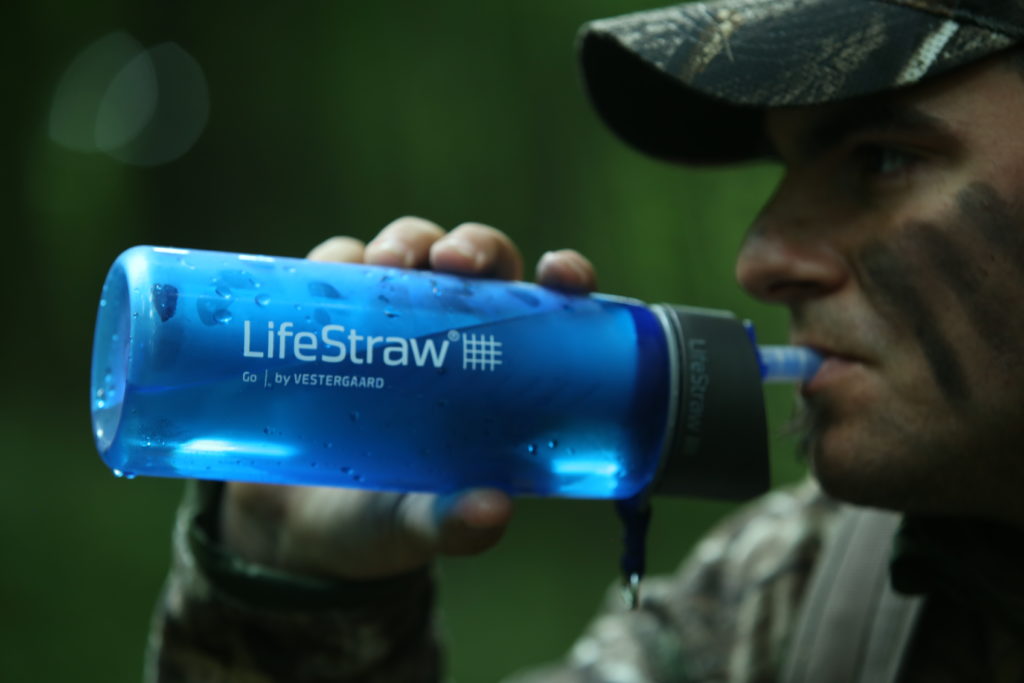
Every single major natural disaster in the last 50 years has had some impact from LifeStraw. In the last 10 years, especially, if you name a disaster LifeStraw has donated products. With the recent Nepal earthquake, there was over $100,000 worth of filters and purifiers provided. Whenever there is a disaster, Vestergaard donates product, and implements it on the ground through the aid organizations.
In terms of ongoing work as mentioned we’re doing the ‘buy one give one’ model in Kenya. Vestergaard has been operating in Kenya with the government for decades, so they actually have over 60 local staff with offices all over Kenya. Whenever we do a major implementation of water purifiers say in rural schools, they’re audited every three months. Vestergaard staff return to these schools to make sure everything is working properly, to make sure they get used properly and to make sure the staff know what they’re doing. Then they service them. If anything breaks, they can take them to the service station and get them fixed, so it’s a really well thought through and accountable system.
Because Vestergaard is a really large public health company, their accountability and auditing is very thorough. The system, the implementation, distribution, the service and auditing – it’s all really, really well accounted for. It’s not like we’re just flying over these countries and dropping water purifiers out of an airplane. It’s a really solid program, so it feels great to be a part of it. There are a lot of horror stories from the developing world of people going in and building a well and then just taking off. Then it breaks and they don’t do anything about it. Whereas, we actually have people on the ground living there who are employed by Vestergaard to make sure that whatever we put in place works.
It’s been a huge agent for positive change and it’s pretty amazing going to these schools and seeing the impact that’s being made by clean water. When I was there last October, half the kids in every single one of those schools were sick. They had typhoid, cholera, all kinds of waterborne diseases and they were missing school because of this and the absenteeism was tremendously high. The principals are absolutely stoked to have these water purifiers installed in the classrooms because it provides safe point of use water that the kids can drink from while they’re at school and it’s one less thing they have to worry about.
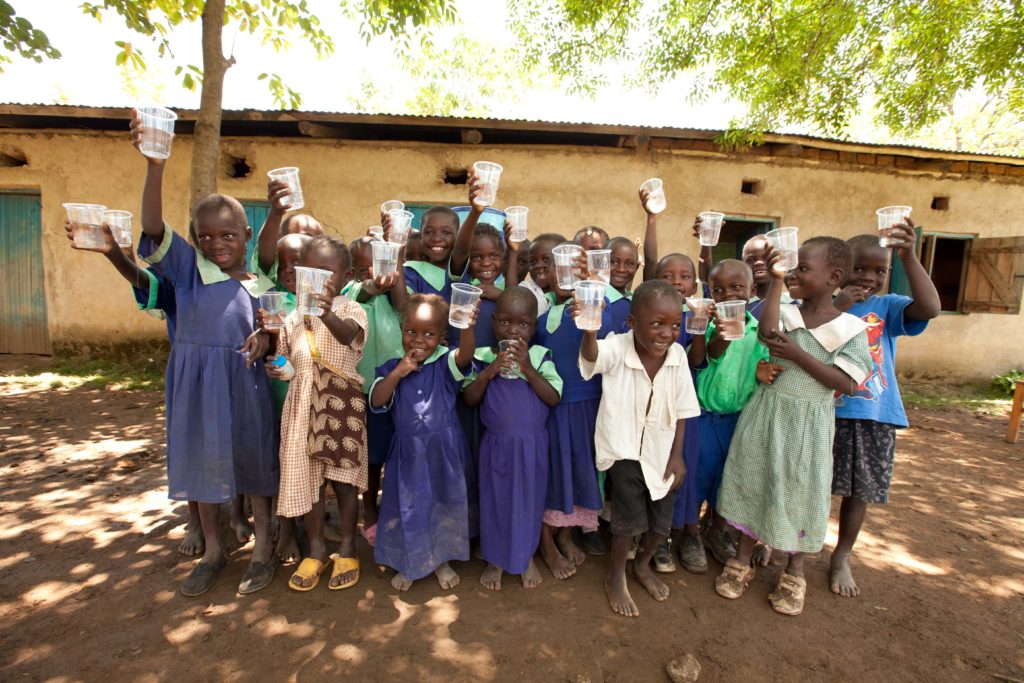
It’s amazing to be a part of their overall operation and it’s a huge part of what motivates us to push the business here in North America as hard as we have and will continue to do.
So as always, I like to wrap up with rapid-fire questions: What’s at the top of your ‘bucket list’ for a hunt?
I don’t get a whole lot of opportunities to go on seriously epic alpine hunts because it’s just a huge time commitment and at this point in the business that’s very hard to fit in. The main trip on my bucket list is to go into a remote area of Northern BC by float plane for a week or more, fully self-supported. I’d be happy with sheep or mountain goats. My brother and I have been talking about it for a while and my hope is to do that next season.

I carry something that honestly is one of my favourite pieces of kit next to my LifeStraw. It’s called the Swedish FireKnife. Initially I was sceptical, but I use it all the time and it’s so useful. It’s an ultralight Mora knife. Mora is a knife company out of Sweden that has been making knives for more 120 years. The FireKnife has a four inch blade with a rubberized handle that’s super grippy and really useful for fishing or hunting because it doesn’t slip in your hand at all and very lightweight. It doesn’t take up a lot of space, but it has a fire steel that’s embedded in the handle of the knife that’s rated for a thousand strikes. It is so effective. It literally shoots a three foot spray of sparks that you can either use to set a fire, light your gas stove if you don’t have a lighter or matches, signal with, or illuminate an area. The knife is razor sharp and super effective.
It’s my go-to knife and I have tried a dozen different knives – all kinds of fancy knives and I always turn to this thing. It’s my go-to piece to carry whenever I’m hunting, fishing, trail running, whatever. It weighs so little.
It’s funny, the first time I saw it, I didn’t think it looked like a serious knife. But, once you use it, you hold it, and you realize wow, the Swedes know what they’re doing. These guys are some of the most legit hunters on the planet, they’ve been doing it forever and this is what most of them carry.
I’d say give it a try. It’s somewhere around $20 or $30 so you won’t feel bad if you lose it or don’t like it, but it’s a great knife in my opinion.
As they say, a man can never have too many knives!
I’d have to agree with you!
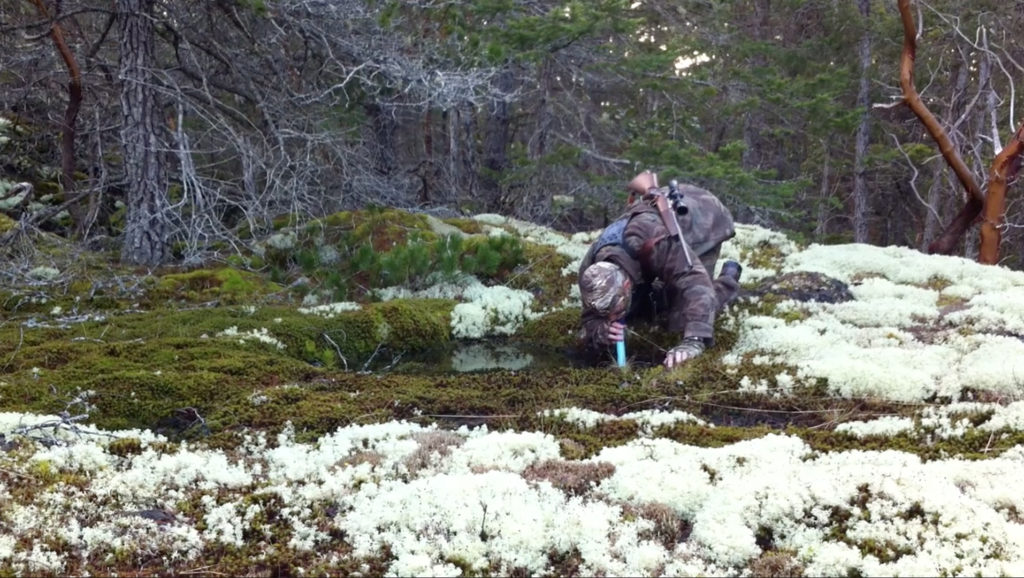
Yeah, definitely. I’m currently reading Mountains of the Mind which is an interesting book about mountaineering and why people go out into the mountains and go on crazy adventures that are life threatening.
Sounds interesting. Is there a book you’ve either gifted or recommended more than any other to friends, family, acquaintances or business colleagues?
Absolutely. There is one book, (Cassell’s) Tales of Endurance by Fergus Fleming. It is honestly the most inspiring book. It is a collection of the most insane adventures, misadventures, and expeditions throughout history. Everything from Everest to Shackleton, but every single one of these adventures, these tales, is 100% true and will just blow your mind. It changes your frame of reference for what the human body is capable of accomplishing. It’s an amazing book, so I regularly recommend that.
Another book I highly recommend is Klondike, which is about the gold rush and, again, it changes your frame of reference for what you think humankind is capable of doing. And the stories! These guys are trekking over the mountains and going into gold rush territory to strike it rich. It’s just a fantastic book.
Those sort of books always hit home and are such a good read. People now aren’t quite as tough as the early days.

